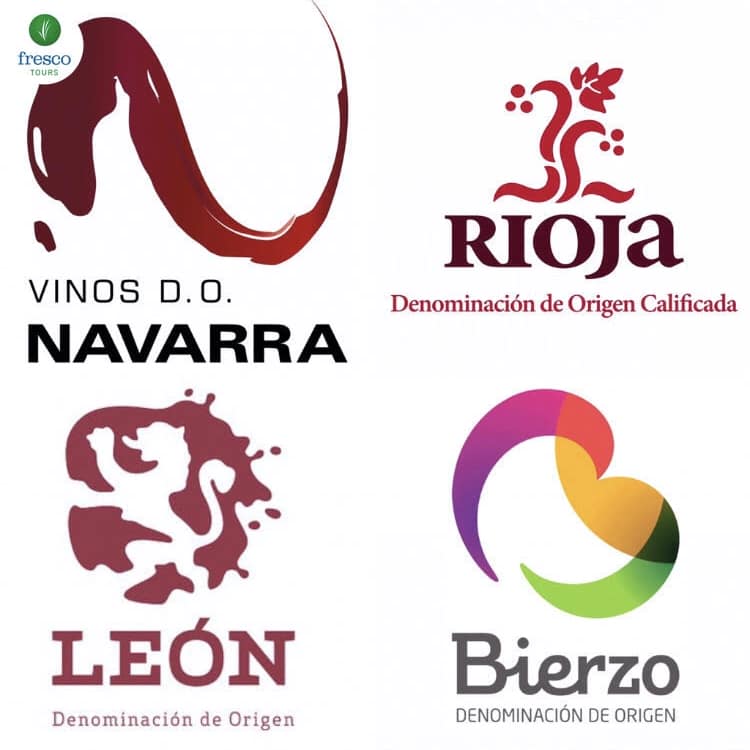The classic French Way crosses four* Spanish wine regions as it makes its way west.
Most people that appreciate fine wine have heard of Spain’s signature Rioja wine. However, as you make your way to Santiago de Compostela, you’ll have the chance to try some lesser-known local wines. Indeed, you may even run into your next favourite wine!
The Denominación de Origen regions you will walk through are the following, starting from the east:
Navarra
1. D.O. Navarra in southern Navarra; you’ll start to see vineyards at Puente la Reina. D.O. Navarra is made from, amongst others, Spanish Garnacha and Tempranillo grapes as well as the French Cabernet Sauvignon and Chardonnay varieties.
This is one of the few regions in Spain that favour rosé over red and white and the only region in the world that boasts a free wine fountain (at Bodegas Irache on the Camino).
Castilla y León
2. D.O. Rioja in the whole La Rioja region, southern Basque Country and a small section of western Navarra and eastern Burgos; you’ll walk through miles of vineyards as you cross La Rioja. D.O. Rioja reds are made primarily from Tempranillo grapes and the whites from Viura.
Unquestionably, many of Spain’s finest wines are produced in this region.
3. D.O. León (formerly known as D.O. Tierra de León) in the lower half of the province of León. D.O. León reds are made from Prieto Picudo and Mencía grapes, and the whites from Verdejo.
You may not see many vineyards, but they are there!
4. D.O. El Bierzo in western León. D.O. El Bierzo reds are almost always made from Mencía grapes and the whites from Godello and Doña Blanca varieties.
Enjoy the scenery in this lush valley as these are probably the last vineyards you will see on your Camino.
*Technically, the French Way crosses the very northernmost tip of the Galician D.O. Ribeira Sacra region in Portomarín. However, you will probably not see any vineyards and the wine produced in this area of the D.O. is residual compared to what is produced in the areas further south.







